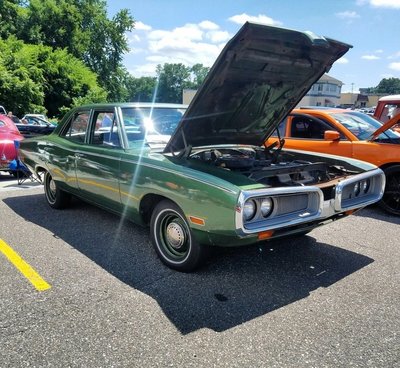FranksCoronet
Well-Known Member
- Local time
- 11:31 PM
- Joined
- Sep 13, 2017
- Messages
- 124
- Reaction score
- 196
- Location
- Wilmington Delaware
hey guys,
So I daily drive my 1970 Coronet Sedan which has its original 318, and pretty much everything else. I daily drive it and I've run into problems here and there, and I want to start driving it more which means I'll have to increase reliability. So here's my question, what things should I look out for on a car like this, because it's being driven a lot more now than it used to, and also what things should I upgrade or supplies should I keep with me.
So far things I've done include
Carb Rebuild
Water Pump Replacement
A solid tune up (everything)
Top end gaskets
And new tires

So I daily drive my 1970 Coronet Sedan which has its original 318, and pretty much everything else. I daily drive it and I've run into problems here and there, and I want to start driving it more which means I'll have to increase reliability. So here's my question, what things should I look out for on a car like this, because it's being driven a lot more now than it used to, and also what things should I upgrade or supplies should I keep with me.
So far things I've done include
Carb Rebuild
Water Pump Replacement
A solid tune up (everything)
Top end gaskets
And new tires
















